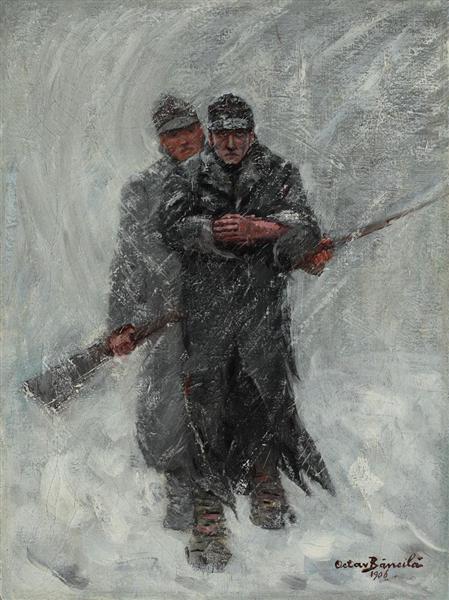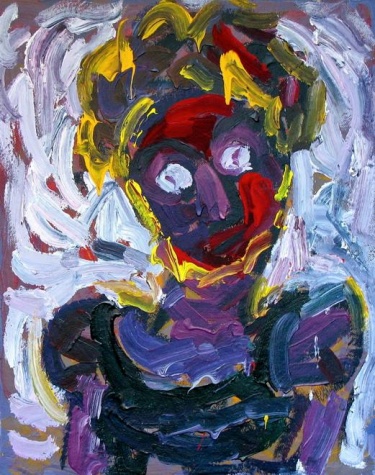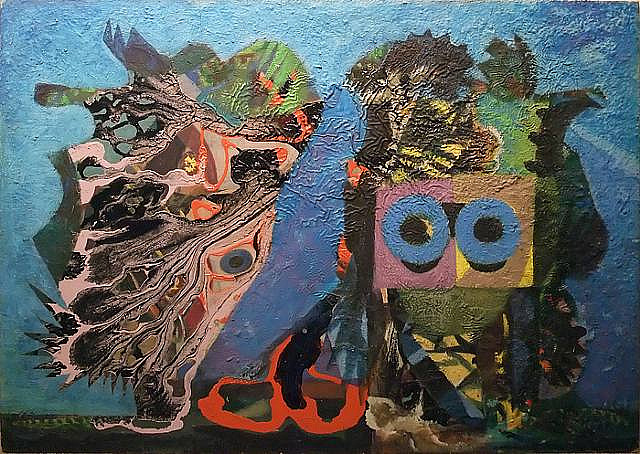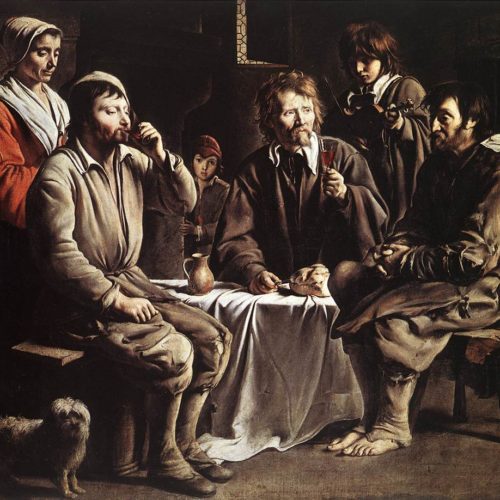Designing our lives intentionally requires a lot of understanding and cannot be reduced to one or two areas, but developing habits and breaking old ones has to be one of the most important focuses for someone who wants to live a good life.
Habits are generalized programs of actions that respond to contexts in which the behaviors proved positive in the past. But what has been learned at one time may not be helpful in another time. What was once goal-oriented behavior becomes blind to new goals and situations, and they lose their utility and sometimes become self-destructive.
Occasionally we become aware that these habits have become counter-productive. We desperately try to break these habits. As we’ve all experienced, this can be a difficult task, requiring tremendous willpower, and often resulting in a painful experience. Breaking bad habits and becoming intentional and following through with goals is not an easy thing, nor does the strategy come intuitively.
There are several ways in which we can change our habits. All these methods are important and can be used together, but here we will discuss a way in which we can direct our attention to become conscious of the nature of the habit by mindfully noticing the initiating cues of the habit. This alone can get us on the track to understanding our own behaviors and changing them.
Fast and Unconscious Habits
Habits are automatic, cue-caused action patterns that can often be unconscious. This, as we have mentioned, is because action-predictions that a learned pattern makes, are sufficiently accurate. Habits are also made fast because quickness in situations which the end is anticipated can be often mean the difference between life and death or making friend or foe. Conscious decision making is far too slow for us to rely on in a pinch.
“Habits reflect associative learning and the formation of context-response associations in procedural memory. Once habits form, perception of the context automatically brings the response to mind, and people often carry out that response.”
Wood & Rünger in “Psychology of Habit”

Once a habit is learned, it takes a high amount of pain, surprise, and effort to get rid of it. It is a process of convincing your body that it is now wrong to act in the way it always has in response to the contextual information, after it being “successful” all this time. Conscious awareness is the result of discovering the unexpected in our actions, and there is no clear reason why habits should ever draw our attention, as they are almost always predicable in their contexts and results. The subtle feelings, quick intuitions, unexplainable impulses that lead up to habitual behaviors all become very difficult to attend to as they are vague in their representations to us.
“People are often aware of their habitual responses although they are largely unaware of the cuing mechanism that activates habits. Given this limited introspective access, people’s explanations for their habitual responses are largely post hoc accounts.”
Wood & Rünger in “Psychology of Habit”
Another trick that the habit mechanism plays on us to make it even more difficult to change or recognize habits is that they make us less sensitive to a result of our habitual action. Even the outcome of a habit becomes somewhat unconscious, and the habit perpetuates for its own sake, rather than for the reward. This is noted in studies that measure that the poor taste of food will not stop someone who has a habit of eating, to eat what they normally do. Although the poor quality might be seen as a surprise that would extinguish the habit, after a strong habit is made, the sensitivity to that surprise is reduced.
This habit-blindness poses a problem in how we can correct our old habits. Our dilemma is that we have an automatic tendency to do things that may be harmful to us, and we do not know what causes them or even the extent to which they harm us, or even help us. Habits are resistant to change based on conscious goals, because they occur without conscious deliberation.
This article focuses on how to break habits by recognizing them, as they arise unconsciously, not because this is the only or the best way, but it is one angle at which we can pay attention to the creature of habit that we have become and gain valuable self-awareness. If what perpetuates habit is our inability to recognize them, we ought to see how we can start noticing them.
Breaking a Habit by Noticing It
Every habit has its cues that initiate it. These, more than likely, are unconscious or at least not noticeable in every instance; the cues are as unconscious as the habit is strong. All habit learning necessitates context which provokes an impulse to that habitual behavior. With extremely salient habit cues, subtle context matters less because the object alone has so much power. That object, is often conscious because it is bounded, but situations that provoke habits are not likely to have conscious cues. For instance, you may be home all day and the impulse to eat comes on suddenly. Nothing changed except for a subtle feeling. Perhaps something in the background, a commercial perhaps, made you walk over to the fridge to take a look.

How can noticing the initiation of a habit be useful? We’ve all experienced how we go through with things, even when we know what we are doing, yet we do them anyways. What difference would it make if we were to become more aware of the feeling we get before we act on a habit?
Habits are not goal-oriented. At one point they may have been, but now they have become self-perpetuating. To bring the elements of a habit to consciousness is the first step to altering them to fit one’s intentional goals. Perhaps you cannot change a habit completely by willpower, but you can at least see how it can be shifted or reconceptualized to serve your goals.
Another way in which early conscious awareness can be helpful is in the use of implementation intentions. This is a trick where we consciously make “if-then” injunctions for ourselves with the knowledge of the cues that provoke our bad habits. “If I feel hungry, I will eat some fruit.” Becoming aware of initiating cues of habits is clearly important to set down your intentions for how to deal with your habits deliberately, and that will prove to be a helpful tool in changing habits.
One step closer to implementation intentions is simple recognizing the cue in order to focus your resistance efforts. Knowing the causes can also simply help you know when to use your energy on overcoming the urgencies. Cue exposure treatment is a way in which people can overcome habits by being exposed to the things that evoke craving without giving into the temptation.
A Habit of Mindfulness
In order to get the benefits of these habit-disrupting techniques, one must be able to become sensitive to the initiating cues of a habit. We’ve already said that this is a difficult task, but there is actually a well-known practice in which people do this. Mindfulness meditation is a practice to make us aware of the subtleties of our lives, including and especially what is overlooked as a result of our unconscious habits.
What mindfulness does is place interest in all that has become ignored in our habitual perceptions and actions. All that was chunked into one habitual event, can now be seen in its smaller elements. This is only possible if we have the motivation that there is something to be learned by looking deeper, and it often takes an open mind to find it. Any time there is a habit, there is always something to see that the habit overlooks.

Creating a practice of mindfulness and vigilance is a strange habit, because it is a “habit” which prevents habits from becoming too strong, too vague, and ignorant of nuance. And we know immediately when the habit of meditation itself gains the problems other habits have: we simply realize we are not meditating any longer.
When to Use Mindfulness to Break Habits
The remaining question is why use this method and why not use others? Since there are many ways to break habits, we need to decide what makes this one better for some habits and not others.
What makes this quiet vigilance of cues an important tool for becoming anew in terms of habit is that it can be done in the presence of the same situation that you normally find yourself in. Whereas some habits are broken by changing the situation completely or avoiding situations altogether, this technique allows one to live normal life, and change small things in it. Potentially, one doesn’t have to lose what was good about an old habit because one has made a small change in conception of a habit. This is a difficult technique, especially with strong habits, but it can otherwise be universally applicable.
What gives this mindfulness the best hope is as a preventative. It is an assuring practice to avoid habit from becoming maladaptive, from stagnating, from hardening. Constantly becoming aware of one’s action allows habit to form and break often enough to continue adapting to new circumstances. This method is also good for noticing habits before they overgeneralize or taking over one’s life. We do not want to overgeneralize, so that when we are in a new situation, we can apply specific habits that treat people as individuals and not as how we just treat all people, because “that’s just how we treat everyone.” Doing this before you get stuck in the ditch of a habit is the best time to practice mindfulness. That is before habits become far too unconscious and when they are less resistant to change.
To be able to recognize the early warning signs of a habit, vigilance is necessary, and, in some cases, superhuman vigilance. Once in the motion of the habit, you have practically done it and reinforced it. It takes more energy to stop mid action than to recognize and deal with the situation just before it arises. What is reinforced is noticing that you’ve already committed the act. It makes you no better to have a habit of continually getting angry and apologizing after. The anger is still just as strong of a habit. If you can notice the urge that just begins an impulse you are better off, and then you can combat it there.
Although it is the most difficult, mindfulness-based approaches to habits is the purest. Not only is it a way of extinguishing old habits, but it also allows new habits to form consciously in their place by forcing a consultation between your highest goals and your habitual actions.



